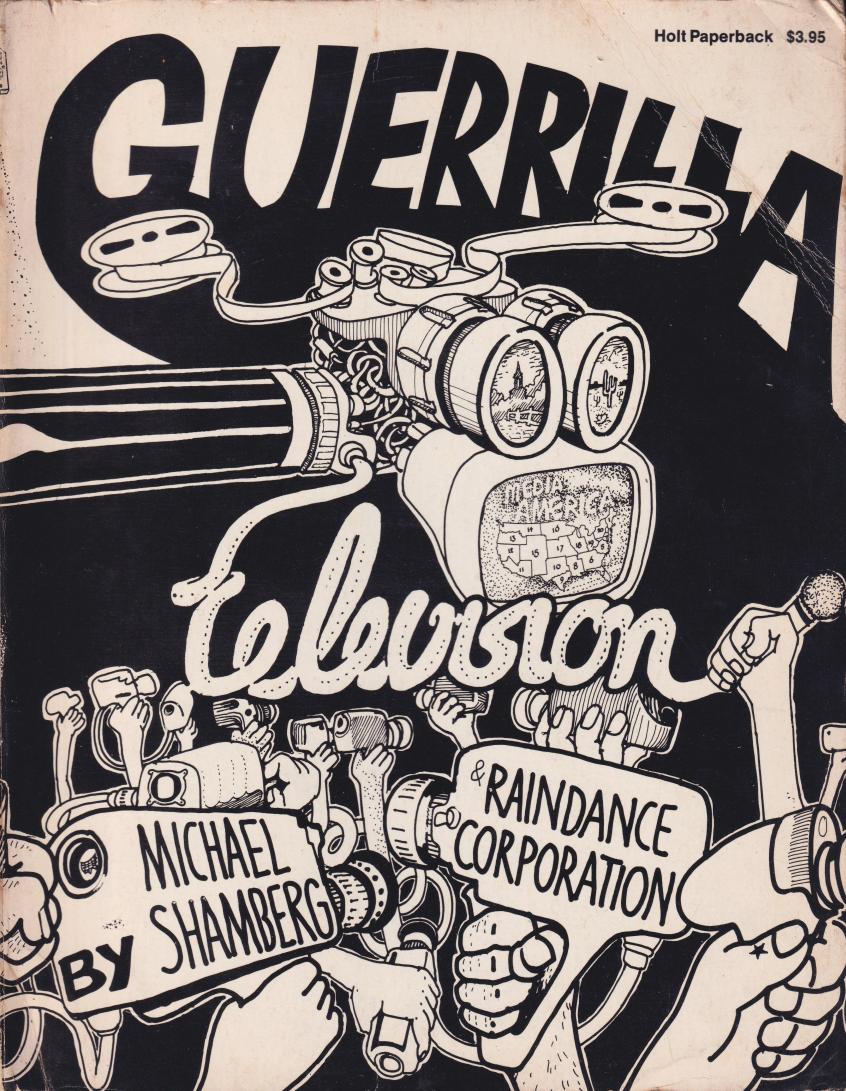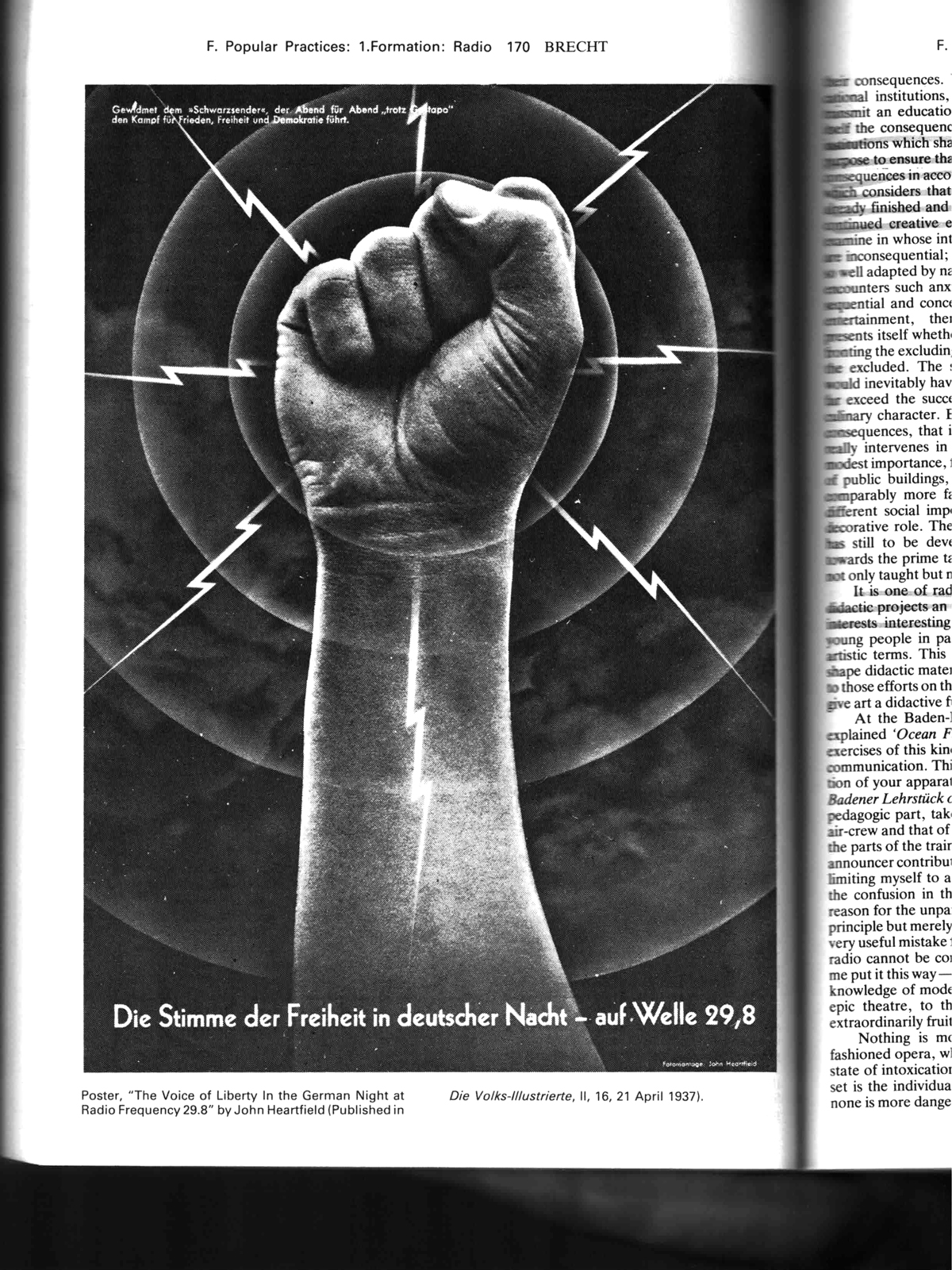Lizzie Borden. 1983
Category: texts
Station Identification
In this project we will both further prepare our sense of the content of our future broadcasts as well as test intermedia potentials for visual and auditory form. We will produce the materials for an identity campaign for our station. These materials will be visual — as type, logos, and image — and sonic — as a set of “station identifications.” We will see what sort of linkages we can find between the visible and the auditory.
1
What is a radio station identification? Research a specific radio station identity and present its visual and/or sonic identify to class. Look on youtube (or elsewhere) for “radio station identifications”. Think about machine voices, genderized voices, sound bites, extreme collisions of sounds and language. Also think about content: what is the stations’ slogan/byline?
Then find a radio station logo (it could be the logo for the station making the auditory announcement or another one). We’re just trying to get a sense of what’s out there and what the conventions and possibilities are in this field of radio identity, as well as how to newly imagine a semiotic relation between sound and image.
2
Read about radio call signs.
Write a script (in one paragraph) for an auditory radio station identification, based (loosely or precisely) on the model you discovered in the research you did above. Plug in new call letters, numbers, name, slogan, voices, sound effects, etc. to the genre that we analyzed in class. We’ll read these scripts aloud next class.
Scenarios
here we go yo here we go yo
so what’s the what’s the what’s the scenario?
Sketch a radio scenario: a dramatic concept for a single radio broadcast. This sketch should set the scene and the overall concept for the broadcast, setting it up in space and time. You can think of the scenario as a something fictional (“suburban punk improvises angsty monologues about teenage life and why school sucks”) or something more straightforward (“interviews with custodial staff about their jobs”).
1: Write a couple paragraphs developing the scenario. Print the scenario and bring it to class. This exercise is just meant to just get a bunch of different ideas on the table as we begin to more concretely imagine and plan our radio work in the building.
2: Revise your sketch or add some paragraphs in which you develop it further by addressing practical details of its execution. Think through how, precisely, you will solicit input (if that’s part of your concept). How long will the transmission be? Who will make it? Where? etc. By working through these and other pragmatic details, how does your concept evolve or shift?
3. Name your scenario.
Radio Venceremos Story – 10 years of taking the sky by storm
Guerrilla Television
Michael Shamberg and Raindance Corporation (Holt: 1971).
Pro Domo Nostro

Theodore Adorno, from Minima Moralia: Reflections from a Damaged Life (Verso: 2020).
Radio as a Means of Communication: A Talk of the Function of Radio
Bertolt Brecht
1930
Radio Call ID Jingles
Guerrilla Radio
Abbie Hoffman
Under FCC Low Power Transmission Regulations, it is legal to broadcast on the AM band without even obtaining a license, if you transmit with 100 milliwatts of power or less on a free band space that doesn’t interfere with a licensed station. You are further allowed up to a 12-foot antenna or the use of carrier-current transmission (regular electric wall outlets). Using this legal set-up, you can broadcast from a 2 to 20 block radius depending on how high up you can locate your antenna and the density of tall buildings in the area.
Carrier-current broadcasting consists of plugging the transmitter into a regular wall socket. It draws power in the same way as any other electrical appliance, and feeds its signal into the power line allowing the broadcast to be heard on any AM radio tuned into the operating frequency. The transmitter can be adjusted to different frequencies until a clear band is located. The signal will travel over the electrical wiring until it hits a transformer where it will be erased. The trouble with this method is that in large cities, almost every large office or apartment building has a transformer. You should experiment with this method first, but if you are in a city, chances are you’ll need an antenna rigged up on the roof. Anything over twelve feet is illegal, but practice has shown that the FCC won’t hassle you if you don’t have commercials and refrain from interfering with licensed broadcasts. There are some cats in Connecticut broadcasting illegally with a 100-foot antenna over a thirty mile radius for hours on end and nobody gives them any trouble. Naturally if you insist upon using dirty language, issuing calls to revolution, broadcasting bombing information, interfering with above ground stations and becoming too well known, the FCC is going to try and knock you out. There are penalties that have never been handed out of up to a year in jail. It’s possible you could get hit with a conspiracy rap, which could make it a felony, but the opinion of movement lawyers now is a warning if you’re caught once, and a possible fine with stiffer penalties possible for repeaters that are caught. If it gets really heavy, you could still broadcast for up to 15 minutes without being pin-pointed by the FCC sleuths. By locating your equipment in a panel truck and broadcasting from a fixed roof antenna, you can make it almost impossible for them to catch you by changing positions.
There has been a variety of transmitting equipment used, and the most effective has been found to be an AM transmitter manufactured by Low Power Broadcasting Co., 520 Lincoln Highway, Frazer, Penn. 19355. Call Dick Crompton at (215 NI 4-4096. The right transmitter will run about $200. If you plan to use carrier-current transmission you’ll also need a capacitor that sells for $30. An antenna can be made out of aluminum tubing and antenna wiring available at any TV radio supply store (see diagram). You’ll also need a good microphone that you can get for about $10. Naturally, equipment for heavier broadcasting is available if a member of your group has a license or good connections with someone who works in a large electronics supply house. Also with a good knowledge in the area you can build a transmitter for a fraction of the purchase price. You can always employ tape recorders, turntables and other broadcasting hardware depending on how much bread you have, how much stuff you have to hide (i.e., how legal your operation is) and the type of broadcasting you want to do.
It is possible to extend your range by sending a signal over the telephone lines to other transmitters which will immediately rebroadcast. Several areas in a city could be linked together and even from one city to another. Theoretically, if enough people rig up transmitters and antennas at proper locations and everyone operates on the same band, it is possible to build a nation-wide people’s network that is equally theoretically legal.

